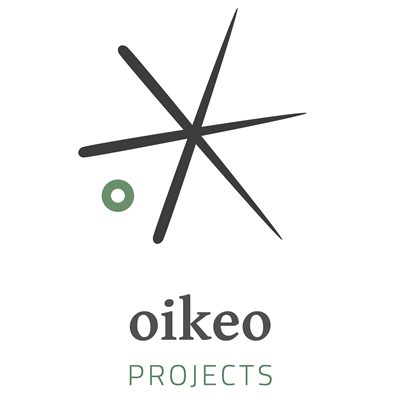

30.06.2013
Mit Spannung haben wir ihn erwartet, den zweiten Einreiseversuch in den Iran. Der Weg ist lang, die Formalitäten zermürbend – doch der Iran empfängt uns mit einer Wärme und Herzlichkeit, für die sich die Mühe allemal lohnt.
Am Dienstagmorgen ist es soweit: um 8 Uhr können wir bei der iranischen Botschaft in Dubai unsere Visa abholen und innerlich bereits ein erstes Mal aufjubeln: die Gültigkeit beträgt 30 Tage! Sofort geht’s weiter zur Fährengesellschaft, die Tickets besorgen, auch hier läuft alles wie am Schnürchen. Die Fähre verlässt Dubai am selben Abend und wir sind mit an Bord. Nach einer Nacht auf der etwas rauen See erreichen wir Bandar Abbas um 9.30 Uhr. Soweit waren wir vor 2 Wochen auch schon mal, unsere Nervosität steigt. Die Angestellten der Fähre wie auch diejenigen des Hafens erkennen uns wieder, viele wünschen uns Glück.
Die Passkontrolle ist kein Problem, bald können wir erste Zettel zu unserem Motorrad ausfüllen. Dies fühlt sich gut an und so langsam fassen wir Mut. Die netten Bekanntschaften von der Fähre helfen uns beim Übersetzen, so erreichen wir bald einmal das richtige Büro, wo weitere Formalitäten anstehen. Von dort geht’s weiter zur 2 km entfernten Shipping Company – ein Stempel hier, ein Formular dort, ein Geldschein am nächsten Ort. Dann zurück zum Hafen, zum Zoll, wieder zurück, zum nächsten Büro, zum nächsten Beamten. Es ist schon Mittag, als wir unser Carnet de Passages, den „Pass“ unseres Motorrades mit dem richtigen Stempel überreicht bekommen. Somit wäre eigentlich die ganze Prozedur beendet, finden wir. Doch die iranische Bürokratie sieht das anders. Erst um 17 Uhr spricht der Beamte, der uns die letzten mühsamen 2 Stunden noch beigestanden ist, die erlösenden Worte aus: „finished!“ – gute 7 Stunden sind wir zwischen insgesamt über 20 verschiedenen Beamten hin und her geschickt worden. Unser Lächeln ist müde, doch die Freude ist da. „Welcome to Iran“ sagt der Wächter am Tor des Hafens und wir brausen los in ein neues Land, eine neue Welt.
Von der feuchtheissen Hafenstadt Bandar Abbas fahren wir am Donnerstag durch die eindrückliche Berglandschaft Richtung Shiraz. Die trockenen, kargen Berge halten stoisch der gnadenlosen Sonne stand, weit und breit ist kein Zeichen von Leben zu sehen. Doch je weiter nördlich wir kommen, desto fruchtbarer wird das Land. Grosse, goldene Getreidefelder wogen im leichten Wind, auch immer mehr grüne Flecken sind auszumachen. Riesige Ziegen- und Schafherden weiden vor der malerischen Bergkulisse, deren Enden sanft auslaufen.
Shiraz – die Stadt der Dichter, der Nachtigallen und des Weins, der hier leider nicht mehr verarbeitet wird. Hier legen wir am Freitag erstmals einen Ruhetag ein: Freitag ist hier der Sonntag, alle Geschäfte sind geschlossen, es sind kaum Menschen unterwegs. Tags darauf besuchen wir den wunderschönen, gedeckten Bazaar, essen Dizi (traditionelles iranisches Gericht mit Ziegenfleisch) und bringen unsere ersten Sätze in Farsi zustande. Händler zeigen uns ihre immensen Teppiche, nebenan werden in Körben Datteln, Walnüsse und Mandeln feilgeboten, der Geruch nach frischen Melonen und Wasserpfeifen steigt uns in die Nase und wir geniessen frische Kirschen und Pflaumen. Immer wieder werden wir angesprochen. Die Herzlichkeit der Menschen berührt uns – bereits im Hafen wurden wir von einer Familie zu einer Hochzeit eingeladen, die jedoch leider für uns zu weit weg stattfinden wird. Einen Nachmittag lang verbringen wir mit Tahar, einem jungen Iraner, den wir im wunderschönen Garten des Grabes vom Dichter Hafez – der iranische Nationalheld – kennenlernen. Gemeinsam mit ihm besuchen wir auch den botanischen Garten, ein wunderbar friedlicher Ort.
In Shiraz kann man auch eintauchen in die alte Geschichte: in der Nähe liegt Persepolis. Vor 2500 Jahren war diese Stadt das Herzstück des antiken Perserreichs, welches sich vom Indus-Fluss im heutigen Pakistan bis hin nach Äthiopien erstreckte. Die massiven Tore, die hochaufragenden Säulen und die detaillierten Steinreliefs sind alle auf einer grossen Steinterrasse errichtet worden und wirken darum umso imposanter. Der Rundgang durch die Gebäude und Paläste lässt uns staunen. Die Reliefs erzählen Geschichten aus uralter Zeit, stramm marschierende Soldaten, Geschenkträger mit Kamelen, wertvollen Stoffen oder Waffen, Besucher des Königs aus verschiedensten Ländern, erkennbar an ihren Trachten.
In der Nähe von Persepolis liegen auch die Könige dieser Zeit begraben. In riesigen, aus dem Fels gehauenen Grabstätten befinden sich – so glaubt man heute – Darius‘ I und II sowie Xerxes‘ und Artaxerxes‘ letzte Ruhestätten. Es ist kaum vorstellbar, welche Mühe und Präzisionsarbeit der Bau dieser Gräber vor 2500 Jahren gekostet haben müssen.
Wir sind begeistert von diesem Land, von dem man im Westen unberechtigterweise so oft nur schlechtes hört. Wir freuen uns sehr darauf, weiterhin Neues zu entdecken und dies mit euch zu teilen.
We eagerly awaited it, the second attempt to enter Iran. The road is long, the formalities grueling - but Iran welcomes us with a warmth and cordiality that is definitely worth all the efforts.
On Tuesday morning the time has come: at 8 a.m. we can pick up our visas at the Iranian embassy in Dubai and can cheer for the first time: the validity is 30 days! Immediately we continue our way to the ferry company to get the tickets, everything runs like clockwork here too. The ferry leaves Dubai the same evening and we are on board. After a night on the somewhat rough sea, we reach Bandar Abbas at 9.30 a.m. We were that far two weeks ago, our nervousness is increasing. The employees of the ferry as well as those of the port recognize us, many wish us luck.
Passport control is not a problem, and soon we are able to fill out the first forms about our motorcycle. This feels good and we are slowly taking courage. The nice acquaintances from the ferry help us with the translation, so we soon reach the right office where further formalities are pending. From there it goes on to the Shipping Company 2 km away - a stamp here, a form there, a banknote at the next location. Then back to the port, to customs, back again, to the next office, to the next official. It is already noon when we receive our Carnet de Passages, the “passport” of our motorcycle with the correct stamp. We think that this would actually end the whole procedure. But the Iranian bureaucracy sees it differently. Only at 5 p.m. does the officer who stood by us for the last two arduous hours utters the redeeming words: “finished!” - we were sent back and forth between a total of more than 20 different officers for a good 7 hours. Our smile is tired, but the joy is overwhelming. "Welcome to Iran" says the guard at the gate of the port and we roar off into a new country, a new world.
From the hot, humid port city of Bandar Abbas we drive on Thursday through the impressive mountain landscape towards Shiraz. The dry, barren mountains stoically withstand the merciless sun, there is no sign of life to be seen far and wide. But the further north we go, the more fertile the land becomes. Large, golden grain fields sway in the light wind, and more and more green spots can be made out. Huge flocks of goats and sheep graze in front of the picturesque mountain backdrop, the ends of which gently taper off.
Shiraz - the city of poets, nightingales and wine, which unfortunately is no longer processed here. Here we have a day of rest on Friday for the first time: Friday is Sunday here, all shops are closed, there are hardly any people around. The next day we visit the beautiful, covered bazaar, eat Dizi (traditional Iranian dish with goat meat) and attempt at our first sentences in Farsi. Traders show us their immense carpets, next door dates, walnuts and almonds are for sale in baskets, the smell of fresh melons and water pipes fills our noses and we enjoy fresh cherries and plums. We are approached again and again. We are moved by the warmth of the people – for example, we were invited by a family that we met at the harbour to a wedding, which unfortunately will take place too far away for us. We spend an afternoon with Tahar, a young Iranian, whom we meet in the beautiful garden of the tomb of the poet Hafez - the Iranian national hero. Together with him we also visit the botanical garden, a wonderfully peaceful place.
In Shiraz you can also immerse yourself in ancient history: Persepolis is nearby. 2500 years ago, this city was the heart of the ancient Persian Empire, which stretched from the Indus River in today's Pakistan to Ethiopia. The massive gates, the towering columns and the detailed stone reliefs have all been erected on a large stone terrace and are therefore all the more impressive. The tour through the buildings and palaces leaves us amazed. The reliefs tell stories from ancient times, soldiers marching at attention, gift carriers with camels, valuable fabrics or weapons, visitors to the king from various countries, recognizable by their costumes.
The kings of this time are also buried near Persepolis. Today it is believed that Darius I and II as well as Xerxes and Artaxerxes are the final resting places in huge tombs carved out of the rock. It is hard to imagine what effort and precision work the construction of these graves must have cost 2500 years ago.
We are thrilled about this country, which in the West is so often portrayed in a very negative light. We look forward to continuing to discover new things and to share them with you.

